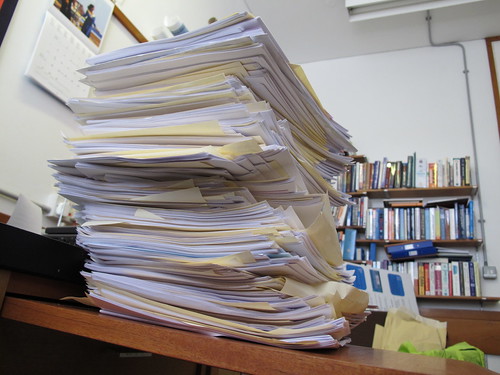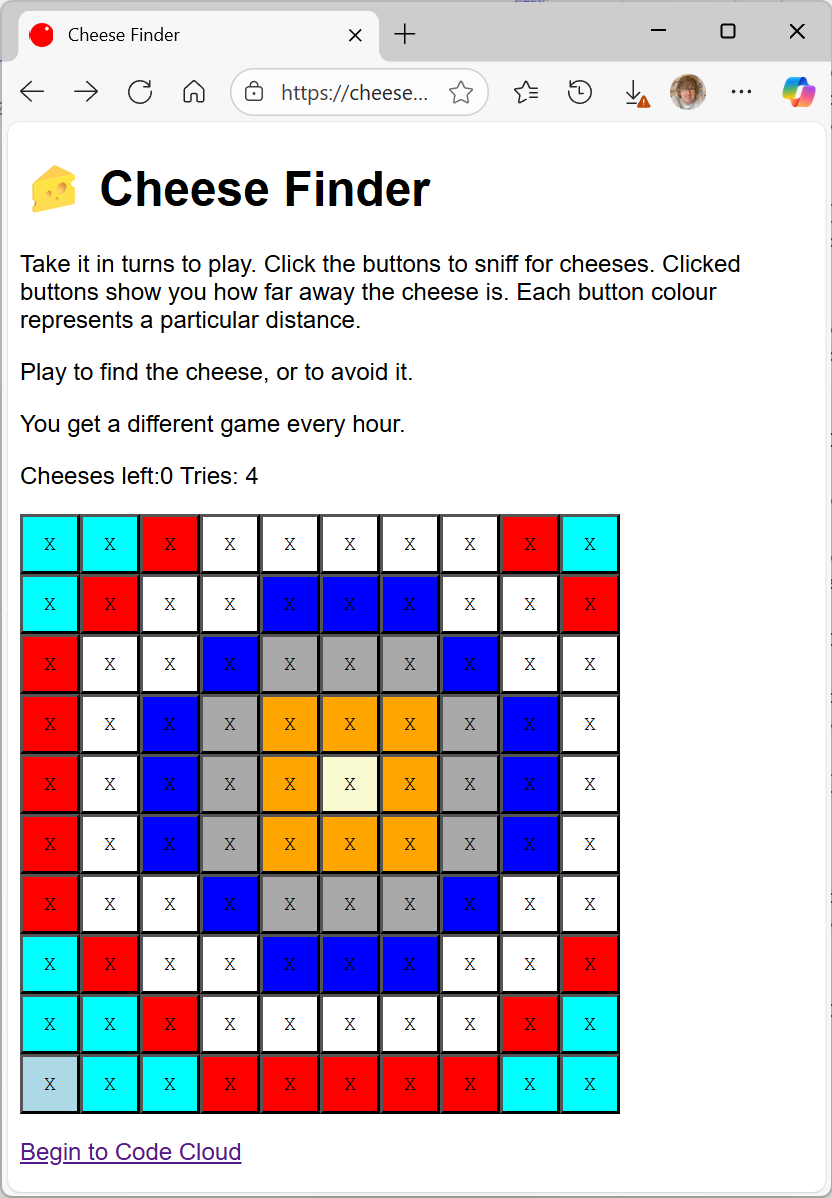iPad Review – Great apart from the broken WIFI
/The iPad is a lovely device. It hasn’t made me any cleverer or better looking yet (but then I’ve not had it a day) but it is nice to use. The screen is great to look at. Browsing web sites is a doddle (until you bash up against somewhere that uses Flash). The applications that you can buy look like they will be really quite useful. And number one wife quite fancies one too. The battery life looks good as well.
As of last night I loved it. This morning, when I woke it up and found that it no longer recognised my WIFI at home, I’m a bit less enamoured. I’d read about these problems when the iPad came out in the ‘states, but I presumed they would have fixed them before I got mine.
They haven’t.
I had to leave the house for work before I could do too much fiddling, and the iPad found the university network and is working fine at the moment, but I’m expecting a tussle when I get home. I’ll probably get around this by hard-wiring the network settings and with a bit of luck this will fix it. Otherwise I’ll have to wipe all the connections and re-connect. I can live with this, at a pinch, but I’m sure that number one wife wouldn’t like it much, along with anybody else expecting to buy an appliance.
I went onto the Apple support site and they have acknowledged there is an issue here, which is nice. They then said it might be a problem with “Third Party” – i.e. not made by Apple – routers. I found this a bit irritating to be honest. If I have twenty devices (and I must have used that number of WIFI devices at home over the years) and the 21st one doesn’t work I’m more inclined to blame the new device than anything else. Some of the suggested remedies (“Turn down the brightness”, “Hold the device above your head”, “Stand on one leg” etc) strike me as a bit daft when the proper solution is “Get Apple to replace the driver software with some that works”.
My advice, for what it is worth, is don’t turn your iPad off. I shut mine down last night and the reboot is the thing that seems to have broken it. Of course you might get the same effect when you wander in and out of range of your “Third Party” access point. Oh well.
Hull Digital Question Time
/The view from the audience, from left to right Jon Moss in the chair, Imran Ali, Helen Philpot and Prof. Calie Pistorius, VC of Hull University.
I’ve just been to something really, really good. With free drinks at the end. Hull Digital Question Time was set up by Jon Moss and brought together a panel of experts to discuss the future of digital technology. I wasn’t sure what to expect, but the combination of interesting questions, a range of expertise from the panel and sensible debate from the audience made for a fascinating evening. And then we all went to the bar..
I think the event has been filmed and it would make an absolutely great podcast, so with a bit of luck it will turn up in a downloadable form at some point in the future. In the meantime, if you get the chance to go to any events like this in the future (and I’ve already asked for another one) then you should jump at it.
One more thing, Jon told us that the date for the next Hull Digital Live event has been set. It is the 4th of November this year. Note it in your diary.
XNA Materials
/Before I went to give my talk yesterday we dropped in at the Microsoft offices in Schipol. Very plush.
They have these amazing lamp shades in the restaurant.
Time around the world, Microsoft style.
The presentation was great fun and the audience was lovely. I really like these trips out. Thanks to all the folks at Microsoft Netherlands for looking after me
You can find the presentation and all the XNA content that I used during the talk here.
A Hot Day for writing Custom XNA Content Importers
/In between gardening and feeling very warm I wrote a custom content importer for XNA 4.0 today. This is the way that you can bring in your own content into an XNA game. I’m playing around with some game ideas and I needed to get a bunch of data into my game engine so I can twiddle with it.
Turned out to be a lot easier to do than I thought it would be. Actually, the whole content setup is lovely to use in XNA. If you ever want to do this, you can find a really great start here:
http://msdn.microsoft.com/en-us/library/bb447754.aspx
The stuff seems to work fine in Windows Phone too. I really know how to enjoy myself in summer…..
Sad Rob
/We were talking about different versions of Windows today and I mentioned that in Number 10 Downing Street they still use Windows XP on their systems. I told everyone that I’d seen it on the “historic” pictures taken inside the Prime Ministers’ residence during the election aftermath.
For some reason knowing this was regarded as sad…
Rob’s Guide to Marking
/It was my “big” exam yesterday. Two hours of panic for the students. Four days of marking for me. So, nobody comes out of it particularly happy I suppose. For any academics out there I present Rob’s guide to marking.
- Don’t try and do it all at once. You will fail. Make a big hole in your schedule and set out how much you want to get done each day. Then you can point to a day in the future and say “I’ll be clear of marking then”.
- Make yourself a nice place to work. I used to cut up the question paper and stick it into one long strip that I could have by the answers so I didn’t have to keep flicking between question and answer as I marked. Now the students write their answers underneath each question. Easier for them, and much quicker for me to mark.
- Use a really nice pen. I’ve been known to spend up to twenty minutes in the Student Union shop choosing a pen with the right colour, feel and heft. Actually, this might be a displacement activity, but if the pen makes you enjoy writing the marks then at least some part of the marking process will be fun.
- Take regular breaks. I’ve got Professor Layton and the Curious Village fired up on the Nintendo DS. A puzzle every 12 scripts or so stops my brain from melting.
- On no account should you make a single pile of all the scripts that you have to mark. This is invariably depressing.
“Hello Silverlight” Book from Manning Publications
/I’ve been lucky enough to get hold of an early copy of this book. If you are new to Silverlight and want to find out more this will tell you in a very nicely written way. It even has cartoons that are both funny and relevant – which is great. I strongly recommend it.
The book isn’t finished yet, but you can download and read the early chapters and even send comments back to the author. I’m looking forward to getting my hands on a proper printed copy when it comes out.
Final Exception Funny
/Think you know about exceptions? What would this method return?
static int funAndGames()
{
int result = 99;
try
{
throw new Exception("Boom");
}
catch
{
return result;
}
finally
{
result = 100;
}
}
Watch this, and then Watch it Again
/
Thanks to Ginny for the link via Twitter. Find out more here.
If you want more insight into what makes developers tick and how to motivate them this video from underbelly is good too. The points that are made right at the end about interesting products are right on the money.
C# Exceptions and Finally
/I’m writing a new version of the C# Yellow Book and I’ve been going through the chapters to make sure they still make sense. Today I’ve been playing with Exceptions. These are things that programs do when really bad things happen. When things are going badly for me in a chess game I have this annoying habit of kicking the board over and storming of to do something else. Exceptions are just like that, but for programs.
If a program finds itself in a situation where it really can’t go any further it can throw an exception and make the issue somebody else’s problem. Really bad in this case means things like “I asked for a number and you’ve given me some text” or “You asked for a file and I can’t find it”. This means that a proper programmer will put such potentially moody code into a try – catch construction so that they can deal with any tantrums that might be thrown:
try
{
// Potentially moody code
}
catch
{
// Code to recover the situation
}
If anything in the block under the try throws an exception the program runs the code in the catch block to try and put things right. When I was younger and more desperate to be liked I used to make sure that code I wrote didn’t ever throw exceptions, but tried to sort things out and carry on. Ask my object to load something from a file that doesn’t exist and it would return a null reference and keep going. Sure, the program that went on to use that null reference would explode some time afterwards, but at least my method hadn’t thrown a tantrum.
Now I’m more nasty. I let my programs throw exceptions if they are asked to do stupid things. That way the fault is generated much closer to the real reason why it happened. Problem is, that sometimes I don’t want to just pass an exception on, I want to do a bit of tidying up myself before I blow away the person that calls me. I can do this by catching the exception in my method and then throwing a new one.
try
{
// Potentially moody code
// Code to tidy things up
}
catch
{
// Code to tidy things up
throw new Exception ("Bad news message to caller");
}
Of course the problem here is that I have to write the code to tidy things up in more than one place. Once if everything works, and again if the exception is thrown. Which is where finally comes in:
try
{
// Potentially moody code
}
catch
{
throw new Exception ("Bad news message to caller");
}
finally
{
// Code to tidy things up
}
You don’t have to add a finally part to your try – catch construction, but if you do it is where you should put all your tidy up code. This is the code that must run whether or not the exception is thrown, and irrespective of what happens in the blocks above. I use code in the finally part to do things like close files, release objects and say bye-bye to network connections. And it works well except in one situation, which is kind of why I’m writing this blog post.
The code in my finally clause will not run if there is nothing to catch any exceptions thrown by the code in my try – catch construction. In other words, if the exception my code throws will cause the program to end for lack of an exception handler the finally clause will not run. I did some experiments to prove this, and decided it was something worth noting.
The thinking, I suppose, is that if the program is going to stop anyway, what is the point of allowing it to run any more code. Most of the time the finally clause will be releasing resources that will be freed anyway when the program is terminated. However, it is not always as simple as that. Sometimes finally code might want to say a formal goodbye to a remote host, or log some information.
Since you can’t rely on someone to always catch exceptions that you might throw (particularly if they are stupid enough to make bad calls of your methods in the first place) I think that this means you need to be a bit careful about using finally. If this means putting tidy up code into a method and then calling it both in the try and catch parts of your program, this might be a step worth taking.
London Town
/Trafalgar Square and the National Gallery
Went to London today. Early start on the train and then a good walk round. The rest of the family acquired some culture at Wicked while myself and number one son took in the gadgets on Tottenham Court road.
Horse guard
Kerbside political comment
Not sure where the other hand went….
Read “Bad Science”
/I was talking to some folks today and they told me they had not read “Bad Science”. They should. There are some books that everyone should read, and this is one of them. It does a great job of getting you to think properly about stuff you see in the papers, and things that advertisers tell you. It makes warning bells come on in your head when you hear things like “Studies show…” and “90% of women prefer….”.
Brilliant.
Marking Time
/Been in the labs marking for the last three days. Today I did the last few presentations before I sit down and enter the whole lot into our system. Students have been making games or banking applications. I have seen some lovely stuff. It’s very hard work, I must have asked “..and what does this bit do?” loads of times. But great fun. Thanks to the first year for turning up on time and to Simon and Mike for sharing the work.


























